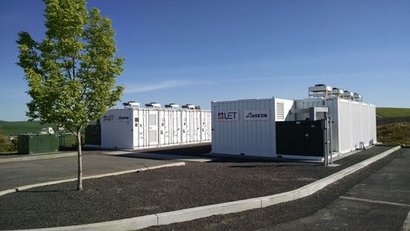
Annual installations will reach more than 30 GW by 2030 – up 250 percent from 2021 levels – according to the latest report from the Clean Energy Technology service at IHS Markit, which specialises in critical information, analytics and solutions.
The report forecasts that the energy storage industry will experience rapid growth in 2021, with installations reaching over 12 GW – an increase of over 7 GW from 2020. This will mark the start of a period of continued expansion, with annual global installations set to exceed 20 GW in 2024 and 30 GW by 2030.
This robust outlook is underpinned by a growing number of ambitious national energy storage targets linked to strengthened decarbonisation commitments from around the globe. Of particular note is China’s recently announced 30 GW energy storage target by 2025, which will help Asia to account for a growing share of global demand in the coming five years.
A strong increase in the outlook for electric vehicle (EV) adoption is leading to increased constraints in the supply of Li-ion batteries. This could cause delays to project commissioning as cell manufacturers prioritise larger customers in the automotive industry over relatively small energy storage system integrators.
While the lower share of battery demand from the energy storage industry (compared to the automotive) will continue to leave it at risk of supply shortages, IHS Markit expects that the current disruption will ease within 12-18 months, as system suppliers diversify their supply base and EV manufacturers firm up their procurement plans for the coming years.
As the world’s major economies increasingly seek to move faster towards an energy transition and governments move to stimulate growth in their economies, renewable energy and energy storage stand to benefit. This has been evident in a global total of 87 GW of national energy storage targets for the coming years announced so far in 2021. These set an increasingly aggressive trajectory for the industry and will necessitate the development of new market opportunities and regulatory changes to support the growth projected in the energy storage industry.
This is particularly the case in China, where ambitious national targets are expected to drive it to be the largest market globally in terms of annual installations by 2025. China will grow significantly faster than any other region in order to meet this aggressive target, with annual installation levels expected to be 14 times higher than 2020 levels for the region in 2030. This compares to growth rates of 3 times and 4 times for the United States and Europe, respectively.
“Delays associated with supply tightness have not yet led to any significant reductions in the outlook for the industry and IHS Markit still expects installations to grow strongly as global supply of Li-ion batteries expands to meet demand” said George Hilton, senior analyst, clean energy technology, IHS Markit. “Increasing focus on the energy transition as a way of stimulating green growth has led to a flood of ambitious energy storage targets announced by governments globally. This has significantly strengthened our outlook for the industry as it becomes poised to start a prolonged period of strong growth through to 2030.”
For additional information:

